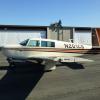How much ice?
-
Members Online
- Crawfish
- Kim Reniska
- kortopates
- CCAS
- M20F
- Nico1
- jeremyc209
- ArtVandelay
- redbaron1982
- Niko182
- SKI
- Deb
- Mark Staggs
- MarkD34M
- 47U
- Sixstring2k
- a.klein
- ElkoRandy20J
- Flyler
- eman1200
- ta2too
- bixmooney
- 1980Mooney
- DCarlton
- DanM20C
- Alangj
- PT20J
- BobbyH
- Bartman
- CaptainBen
- David Lloyd
- Hank
- Bradmas
- MattS
- flyboy0681
- Patrick Horan


Recommended Posts